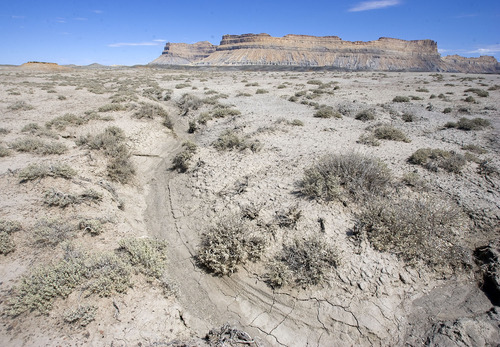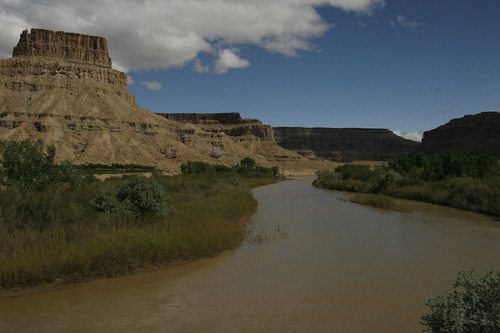This is an archived article that was published on sltrib.com in 2013, and information in the article may be outdated. It is provided only for personal research purposes and may not be reprinted.
Price • By the time a proposed nuclear power plant near Green River could be up and running, there would be plenty of regional need for its two reactors' massive output, according to court testimony Tuesday.
This is because at least 3,800 megawatts of coal-fired generating capacity faces decommissioning by 2025 in Utah and surrounding states, while electrical demand is expected to grow at least 2 percent a year, testified Reed Searle, an executive with the Utah company proposing Utah's first commercial nuclear power plant.
Blue Castle Holdings' plans are on trial this week in 7th District Court, where environmental groups are seeking to invalidate water rights the state transferred to the project. HEAL Utah and other groups are trying to show that Blue Castle has neither the financial ability to shepherd the project through a $100 million licensing process nor the electrical market to ensure the disputed water is put to "beneficial use," as required under Utah water law.
At the peak of construction, the project would employ 4,000 and then maintain a permanent workforce of 800 to 1,000 during operations.
Company executives and expert witnesses took the stand during the first two days of trial before Judge George Harmond, claiming the project is economically feasible and pulling 53,000 acre-feet from the Green River to cool its reactors won't damage the river, the four endangered fish species it harbors, or senior water-rights holders.
—
Positives • Supporting this view was State Engineer Kent Jones, the public official who authorized the transfer of water rights to the nuclear project last year. He testified that Blue Castle met the criteria for winning the water rights, which previously had been approved for a coal-fired plant that was never built.
"There was a need and drive to accomplish what was being proposed," Jones said. "We are very energy dependent. Power plants create jobs that bolster other jobs. There were a lot of positives. We didn't see it would be detrimental to public welfare as long as it was built to standards."
Later this week, Blue Castle's foes will put on expert witnesses who contend the project is a speculative venture that carries plenty of risk to the public welfare. Topping their exhibits will be the declining flows in the Colorado River basin, which are expected to continue dropping in the face of prolonged drought and increasing demand. The nuclear plant would pull 70 cubic feet per second from the Green, which could further stress Lake Powell, already below half capacity and deprive other users of water, environmentalists say.
But Tuesday's testimony focused on the economic feasibility of a nuclear plant in Utah, currently an exporter of surplus electrical power generated from locally produced coal. This cheap fuel's impact on climate and air quality is making coal an increasingly less attractive option, while natural gas is subject to wild price spikes, particularly as utilities abandon coal in favor of gas.
While nuclear plants are expensive and risky to build, their operating costs are extremely low and they emit no pollution — giving nuclear unique virtues attractive to the utilities that deliver power to homes and business, said Robert Graber, Blue Castle's vice president for energy economics.
—
Utility takeover • The company intends to develop the project to the point where Rocky Mountain Power or other utilities will take it over as a way to diversify their portfolio away from fossil sources.
"We are selling the option. We are not going to build the plant," Graber said. "The utility benefits from all the de-risking we've done and for a small cost get control of the asset."
Executives pointed out that PacifiCorp, Rocky Mountain Power's corporate parent, listed Blue Castle as a possible power source in its latest integrated resource plan, or IRP.
But this long-range planning document demonstrates a far bigger commitment to wind — despite that energy source's limitations.
"Nuclear power is not considered a viable option in the PacifiCorp service territory before 2030 due to total capital cost uncertainty, sociopolitical resistance, and regulatory obstacles," the IRP states.
In an email exchange, Rocky Mountain Power spokesman David Eskelsen said Blue Castle contacted the utility about its nuclear project in 2010, but Rocky Mountain made no commitment to buy Blue Castle's power.
"Based on our long-term planning," he said, "construction of a nuclear power plant is not in the foreseeable future for Rocky Mountain Power."





